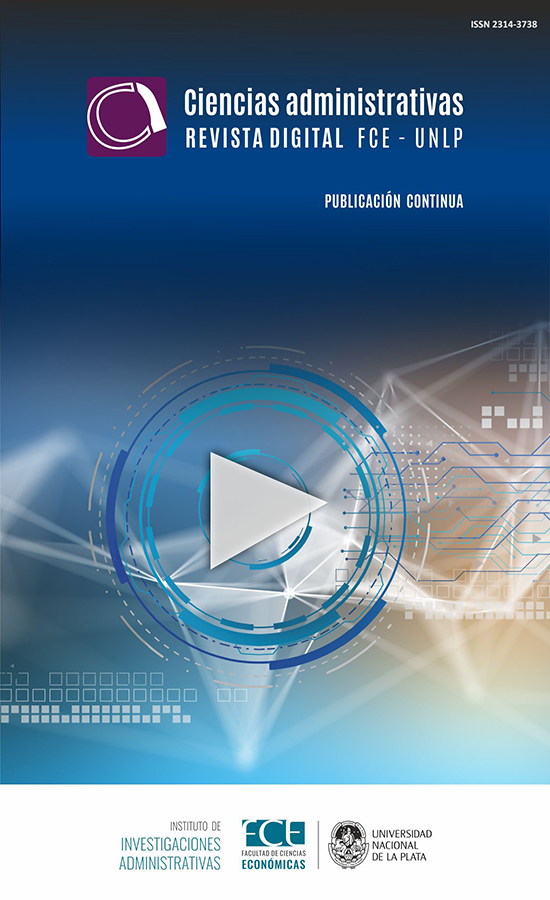Agro Value Networks in Argentina
A new paradigm
DOI:
https://doi.org/10.24215/23143738e146Keywords:
social capital, indirect effects, externalities, agro value networkAbstract
The activities inherent to the broad agro sector are characterized by facing profound transformations resulting from the impact of technological innovation and its effect on competitiveness and productivity. However, these changes also generate indirect effects on sustainability, knowledge management, and business organization. This reality impacts the types and timing of agribusiness, where the sector is no longer conceived solely as a food provider but also incorporates the role of a supplier of biological inputs and fuels.
This new reality requires the expansion of theoretical approaches that allow us to understand more deeply those phenomena not quantified in the classical analysis of the value chain, value network, or even the production network.
With this in mind, this article aims to position the reader in the problematic situation presented and, as a foundation, to discuss the challenges posed by the available theoretical framework, as well as to present a possible alternative analysis model based on a value network for the agro sector.
Downloads
Metrics
References
Anlló, G., Bisang, R. y Salvatierra, G. (Eds.). (2010). Cambios estructurales en las actividades agropecuarias. De lo primario a las cadenas globales de valor. CEPAL- PROSAP. https://hdl.handle.net/11362/3804
Barrera Rodríguez, A. I., Baca Del Moral, J., Santoyo Cortés, H. V. y Reyes Altamirano Cárdenas, J. (2013). Propuesta metodológica para analizar la competitividad de redes de valor agroindustriales. Revista Mexicana de Agronegocios, 32, 231-244.
Bisang, R. y Kosacoff, B. (2006). Las redes de producción en el agro argentino [Ponencia]. XIV Congreso anual AAPRESID.
Bongiovanni, R. y Tuninetti, L. (2021). Huella de Carbono de la cadena de algodón de Argentina. INTA, Cámara Algodonera Argentina.
Diario22.ar. (18 de agosto de 2022). Made in Chaco. La Provincia producirá Yogur de frutillas. https://www.diario22.ar/notix2/noticia/179784_made-in-chaco-la-provincia-produciraacute-yogur-de-frutillas.htm
Fundación Pro Tejer. (s. f.). Institucional. Recuperado el 1 de marzo de 2023 de https://fundacionprotejer.org/institucional/
Monzó, E. (2003). Estrategias individuales y colectivas de capital social: el impacto de programas públicos en dos comunidades campesinas. Los casos de Ajial de Quiles y Cerro Blanco, VI Región de Chile. En I. Arriagada y F. Miranda (Comps.), Capital social: potencialidades analíticas y metodológicas para la superación de la pobreza (pp. 243-258). CEPAL.
Naciones Unidas y Comisión Económica para América Latina y el Caribe. (2017). Territorio, infraestructura y economía en la Argentina: restricciones al crecimiento de distintos complejos productivos. CEPAL. https://hdl.handle.net/11362/42060
Piedra, D., Pellerano, L., Tortarolo, G., Ordenavía, M. N. y D’Angelo, M. L. (2020). El sector agropecuario/agroindustrial de la provincia del Chaco. INTA, Ministerio de Agricultura, Ganadería y Pesca de la Argentina.
Porter, M. E. (1985). The competitive advantage: Creating and sustaining superior performance. Free Press.
Resolución Técnica N°22 [Federación Argentina de Consejos Profesionales (FACPCE). Centro de Estudios Científicos y Técnicos (CECyT)]. Normas Contables profesionales: Actividad agropecuaria. 26 de marzo de 2004.
Rodríguez, A. G., Mondaini, A. O. y Hitschfeld, M. A. (2017). Bioeconomía en América Latina y el Caribe. Contexto global y regional y perspectivas. CEPAL, Naciones Unidas.
Villegas Arias, G. C. (2008). Organizaciones en red: Factores críticos de diseño. Contaduría y Administración, 225, 9-38.
Additional Files
Published
How to Cite
Issue
Section
License
Copyright (c) 2024 Gerardo Santos Oliveira

This work is licensed under a Creative Commons Attribution-NonCommercial-ShareAlike 4.0 International License.
Those authors who have publications with this journal, agree with the following terms:
a. Authors will retain its copyright and will ensure the rights of first publication of its work to the journal, which will be at the same time subject to the Creative Commons Atribución-NoComercial-CompartirIgual 4.0 Internacional (CC BY-NC-SA 4.0) allowing third parties to share the work as long as the author and the first publication on this journal is indicated.
b. Authors may elect other non-exclusive license agreements of the distribution of the published work (for example: locate it on an institutional telematics file or publish it on an monographic volume) as long as the first publication on this journal is indicated,
c. Authors are allowed and suggested to disseminate its work through the internet (for example: in institutional telematics files or in their website) before and during the submission process, which could produce interesting exchanges and increase the references of the published work. (see The effect of open Access)





































